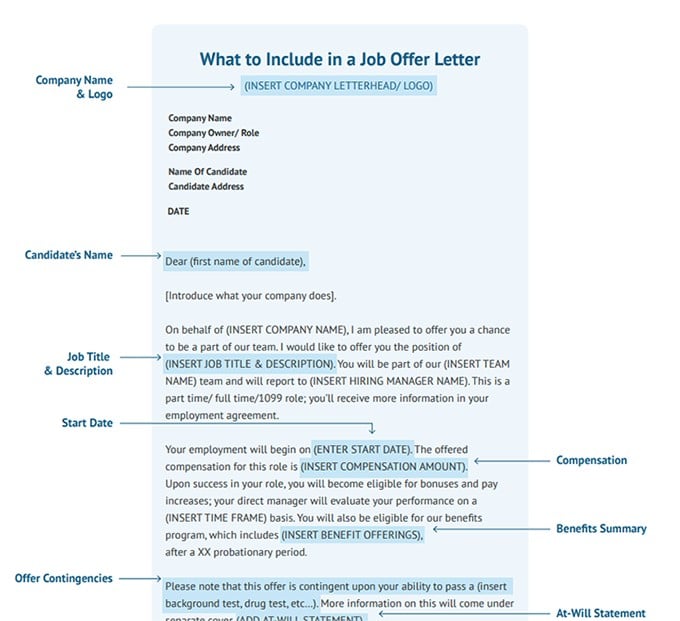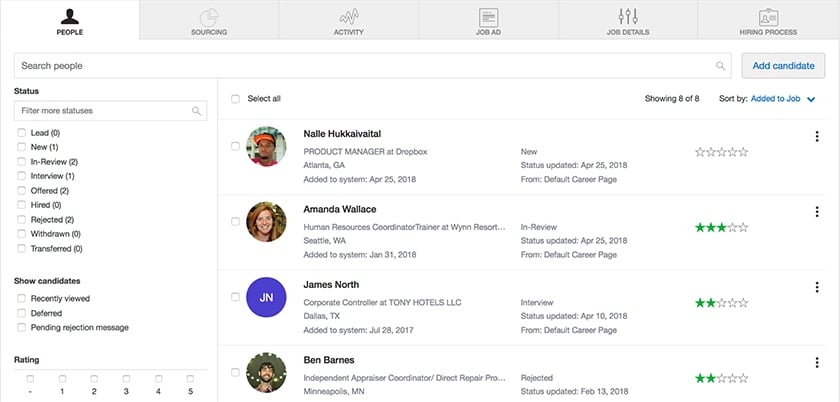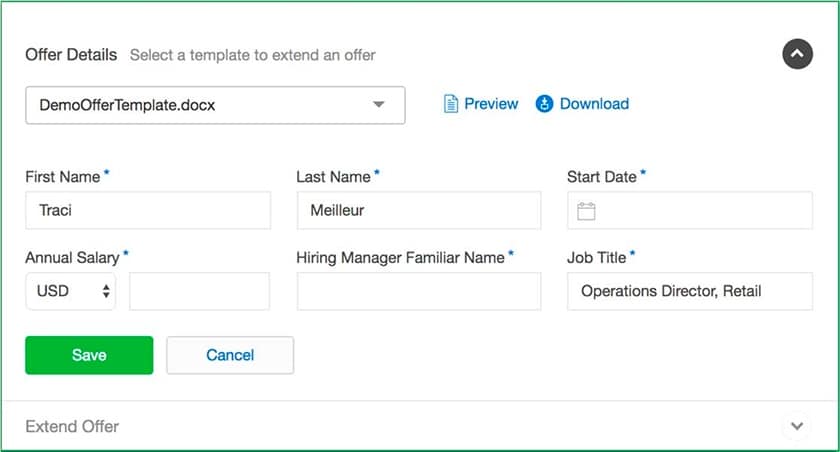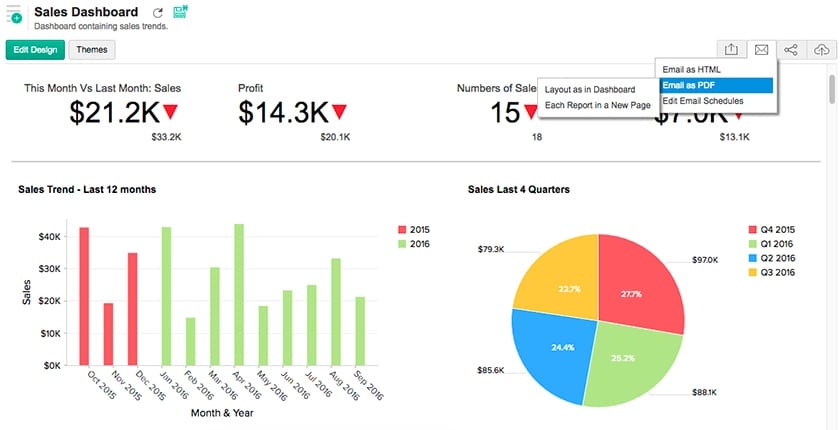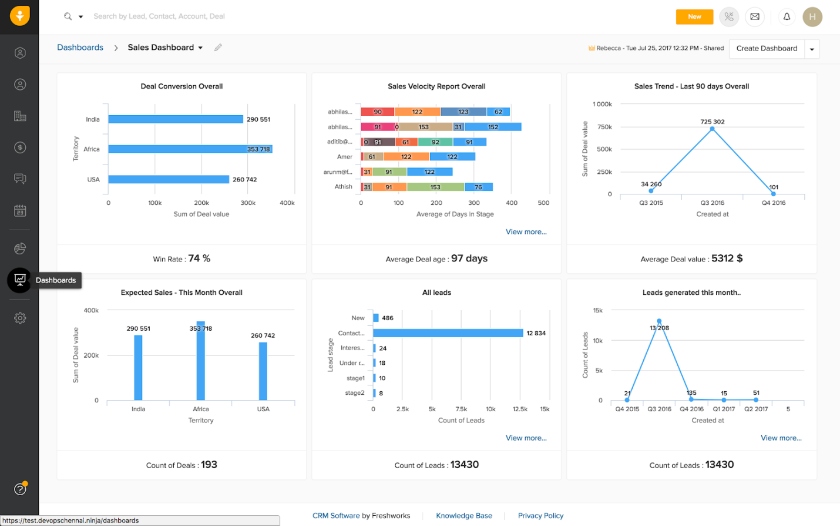Sales management is the process of developing, monitoring, and cultivating the end-to-end operations of your entire selling process. The six key ways to do this is to effectively build and onboard your sales team, develop a sales plan, provide your team with resources, and monitor your sales and team’s overall performance. We’ll explore these key aspects plus cover the top sales software and resources needed to accomplish these activities more efficiently.
We’ve also added templates to many of the aspects of managing sales throughout the article to help you establish your sales processes and practices effectively.
1. Building Your Sales Team
Sales management includes attracting and hiring talented salespeople to fill various sales development, account executive, or customer service positions in your sales department. It’s essential to be diligent and deliberate during this stage of developing your sales operations. Having the right talent is often the difference between success in hitting your organizational sales goals or falling short. Below we share steps on how to recruit and build your sales team.
Thank you for downloading!
💡 Quick Tip:
To maximize your chances of hiring sales reps fast, consider posting your sales rep jobs on the largest job board, Indeed.
In addition to free job posts and applicant tracking features, Indeed lets you scour its resume database to find the best sales talent with the exact right mix of selling skills and product knowledge for your company.
Design a Robust Recruitment Process
To build a strong sales department, you must have a standardized process for creating sales job descriptions, accepting applications, and narrowing down potential candidates with interviews or assessments. It allows you to select and choose from multiple qualified applicants for each role you plan on filling. Job search platforms like Indeed, ZipRecruiter, and LinkedIn help you create and organize job postings and filter applications.
To attract the right applicants, including the head of sales and marketing and sales managers, job descriptions must accurately describe the duties and responsibilities of the position. Job listings should also include compensation, benefits, job location, and expected work schedule. Make sure to describe the company culture and whether or not remote work options are available, since the ability to work remotely is an increasingly desired workplace attribute.
Craft your job descriptions so they are sufficiently detailed to give a candidate enough information to pique their interest without providing so much detail that they become overwhelmed and don’t apply. Download our sample job posting to get started creating your own.
Thank you for downloading!
💡 Quick Tip:
To have an efficient recruitment process, use a project management software to keep track of all the candidates you’re interviewing.
You can use Kanban-like boards in tools like Trello to move applicants along various recruitment stages, and ensure no one falls through the cracks.
Assess & Interview Candidates
After narrowing down the submitted applications to a pool of qualified candidates, schedule and conduct interviews with them to see how they would fit into your company culture. It’s important to remember that interviewing is a two-way process. Keep in mind that while you are interviewing them for a role on your sales team, they are also interviewing you to see if your company is a good fit for them.
Skills assessment tools are another way to vet applicants to determine if they have the knowledge and abilities required for certain positions. This can be done through sales simulations or a skills test with questions related to the sales process, such as creating a sales pitch or developing a sales plan.
Make the Offer
Once the pool of qualified applicants is narrowed down to those you want to hire, send an offer letter. This letter should outline the proposed starting date, base salary plus any commission or sales bonus structure, and working hours. Make sure you also provide a contact they can reach out to with questions and ask them to respond by a specific deadline.
Pro tip: Use a candidate ranking system where the top candidates get the first job offers, then if they turn the offer down, offer letters can be sent to the next candidates in line. This allows you to always have qualified candidates ready to send offers to. Recruiting management software like SmartRecruiters can help you manage this process with candidate scoring capabilities and one-click offer letter generation.
2. Onboarding Your Sales Team
Create a structured onboarding process to acquaint new sales personnel with their role as well as your company culture and values. It should include initial sales training to get them familiar with your company’s sales process, products, or services quickly. It is also a good opportunity to provide your new hires with essential resources, such as a sales playbook, and introduce the techniques they need to complete sales activities, fulfill quotas, and hit sales goals.
Thank you for downloading!
💡 Quick Tip:
There are various components that go into onboarding your sales team, and using a project management tool to keep track of all the activities could prove helpful.
Tools like Asana have project management features that let you list down all the associated activities that go into an aspect of the sales onboarding process, so nothing falls through the cracks.
Pro tip: To better manage the employee onboarding process, treat it as a project with a start date, end date, and tasks to be completed. Project management software like Trello can be used to track completed onboarding activities and the remaining tasks to be completed.

Trello project management software’s clean and simple dashboard lets you view ongoing tasks easily. (Source: Trello)
3. Developing Your Sales Plan
The two activities of sales management discussed above involved building a sales operation by hiring and onboarding sales employees. However, if you are a solopreneur, creating a sales plan may be the first primary activity you need to complete to manage your sales operations. A sales plan includes every aspect of developing and implementing a strategy for generating sales revenue. We discuss steps below on how to craft your sales plan.
Thank you for downloading!
💡 Quick Tip:
Once you’ve created a sales plan, give your sales team the tools to execute it effectively with robust customer relationship management (CRM) software.
Use a CRM like Pipedrive to help your sales team collaborate on deals, develop sales reports, track deals, and create custom sales dashboards
Establish Sales Goals
Setting sales goals for your organization is the first step in crafting a sales plan. It dictates your strategy in terms of your sales process, tactics, and how sales quotas are set for teams or individuals. Sales goals provide a target number for closed deals or revenue generated, along with sales objectives that indicate how a sales goal target will be hit.
To set your sales goal, ensure you have an understanding of your break-even point of revenue you need to hit to cover all of your expenses. The amount of desired profitability above the break-even point tells you how much additional revenue you need to be profitable and hit your organizational goals. That revenue needs to be translated into a sales goal, segmented into specific activities, and communicated to your sales team.
Pointagram is an excellent tool for setting and tracking sales goals. This platform is our top pick for the best sales gamification software because it enables your team to easily visualize sales performance progress. It turns your sales goal into a visual target, complete with a finish line to represent the goal, and displays icons to show your team’s progress toward that goal.
Pointagram gamifies sales targets to motivate agents to hit their goals. (Source: Pointagram)
Design Your Sales Process
Whether you are handling sales by yourself or have a team of agents completing sales activities, you should have a set of repeatable steps for lead generation. You should also have a process in place for qualification, nurturing, and transitioning those leads into paying customers. This is also known as your sales process management.
There are two primary sales process elements to design, and they track your ability to move a lead into the next stage using performance metrics. The first is known as a sales funnel. The sales funnel visualizes your sales process stages from the point of view of the customer journey, starting from awareness of your business to purchasing from it.
Your sales funnel should identify each stage of the customer journey (e.g., awareness, interest, consideration, decision) as well as conversion rates for each. This allows you to see each lead’s current status and how effective you are at getting leads through each stage of the funnel. Customer relationship management (CRM) systems like HubSpot CRM have reporting features that display lead conversion rates of each stage in the sales funnel.
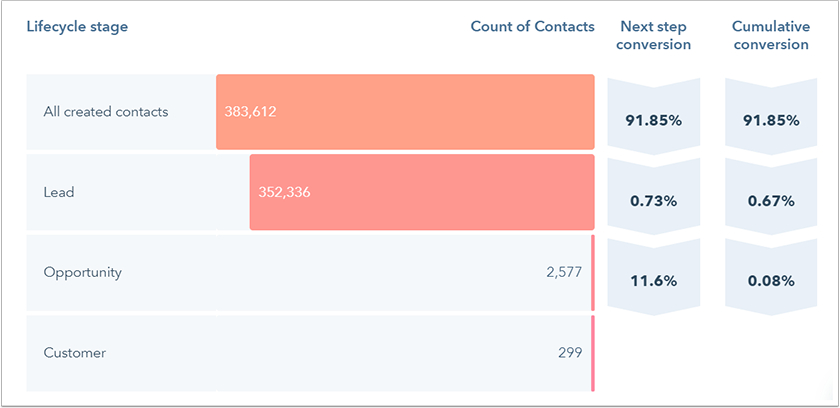
HubSpot sales funnel with conversion rates (Source: HubSpot)
The other sales process component to design is a sales pipeline. Sales pipeline stages differ from those in the sales funnel—they represent internal sales activities that must be completed before a lead becomes a customer.
In other words, sales pipeline activities move a lead through the stages of your sales funnel. CRMs and sales force management tools like Pipedrive enable you to track sales pipeline activities in a Kanban view that lists each deal opportunity under a pipeline stage.
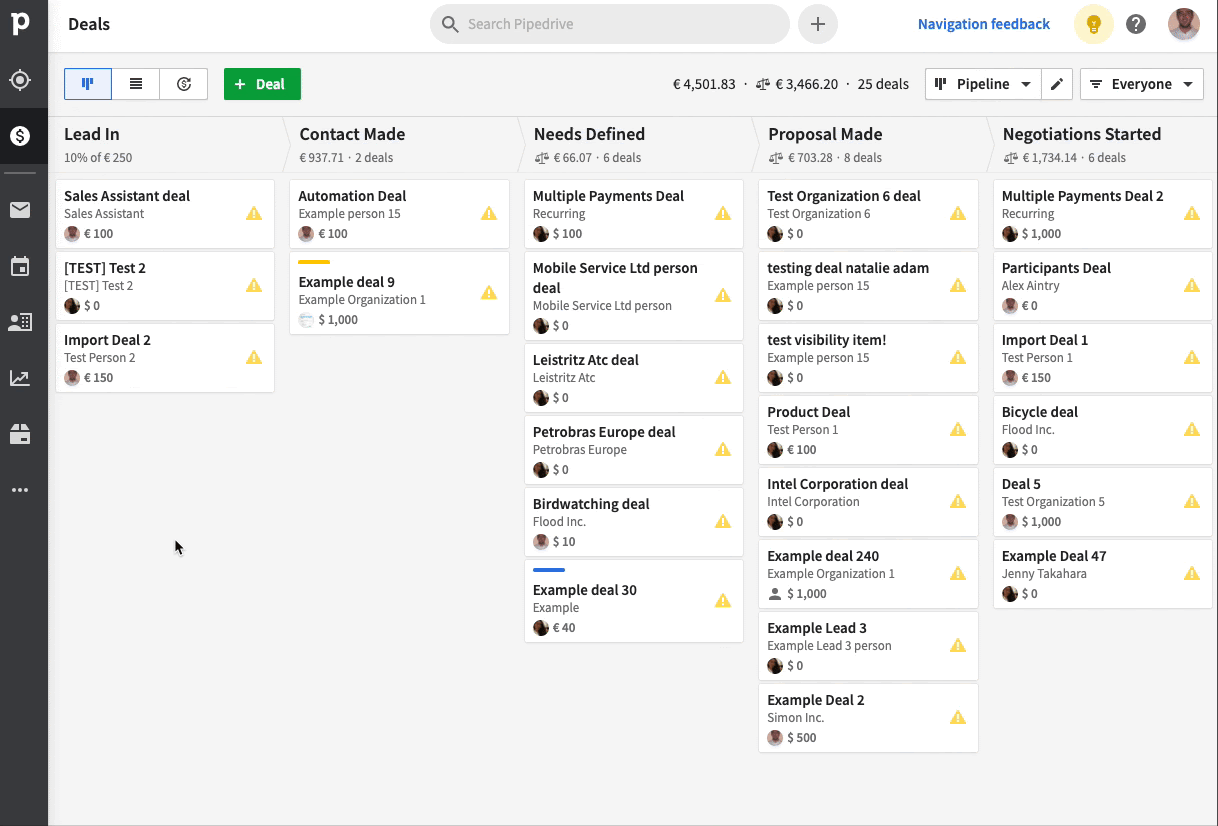
Pipedrive sales pipeline is laid out in a Kanban-style board, making it easy to track sales progress. (Source: FinancesOnline)
Sales funnel sample vis-a-vis associated pipeline stages.
Craft Your Sales Tactics
Sales tactics, or techniques, are how you conduct sales activities and close sales deals. One example of a sales tactic used to generate leads, nurture them, and drive purchase decisions is using emotional selling. It involves triggering emotions such as altruism, greed, envy, shame, pride, or fear in lead nurturing conversations or marketing content to create and foster interest or motivate buying decisions.
Upselling and cross-selling are also examples of sales tactics that drive additional revenue. Cross-selling tactics persuade customers to purchase additional products or services complementary to the item they already purchased. Alternatively, upselling tactics encourage customers to buy a more expensive version of the item they’re interested in or a more expensive alternative.
There is no shortage of other tactics that can be incorporated into your sales process, including upselling, cross-selling, and consultative selling. Regardless of which you use, if you have a sales team, you need to be sure that each member understands how to properly use the technique by giving them relevant training.
Set Sales Quotas
Once you identify your sales goals, process, and specialized tactics to get leads through the process, set sales quotas for your team (or for yourself if you’re solely responsible for sales activities). Setting a sales quota specifies activities such as the number of calls to be placed or emails to be sent during a given period. They can also be performance-based, where minimum requirements are set for revenue or deals that need to be produced.
Sales quotas assign production requirements to incentivize individual performance and enable you to hold reps accountable. When assigning quotas, they should be broken down into shorter periods like daily, weekly, monthly, or quarterly requirements, and continuously tracked to make sure everyone is on pace to hit their numbers.
Create & Follow Operational Best Practices
As part of ensuring the day-to-day sales operation is as smooth as possible, there are a few guiding principles managers in all types of functional roles should follow. Below are some best practices that should be used in sales management:
- Productive meetings: Meetings should only be held for crucial information or for anything that requires input or collaboration among a team. Create an outline for everything that will be covered in a meeting, set a start and stop time, and stick to the agenda and schedule.
- Set clear expectations: Especially for goal and quota communication, make sure each team member knows exactly what is expected of them along with the consequences and incentives for their performance.
- Promote transparency: A culture should be created that makes employees feel they can be open with their superiors and that managers share information with their team. Foster an open-door policy where sales members know they can talk freely with their manager about anything they’re struggling with, as this reflects sound sales leadership.
- Emphasize communication: Continuously explain the importance of robust communication and collaboration, while also practicing it from the top-down and providing tools to make it easy to communicate.
4. Providing Sales Resources
A crucial element of marketing and sales management is providing your sales team with the resources they need to be effective. These resources can be specific sales enablement technology, product or service education, coaching and insights, ongoing training, or lead lists or sources to help generate leads. Below we share some tools you can provide your sales team to ensure that they are equipped to perform their tasks effectively.
Customer Relationship Management Software
Customer relationship management (CRM) software is used to organize lead information, communicate with leads and customers, and collaborate on sales tasks with other team members, making it a good sales management system. CRMs act as a centralized system for managing all sales activities and streamline simple tasks with tools for workflow automation and automated lead nurturing campaigns.
Popular CRMs like Zoho CRM and Freshsales also present performance and activity information acquired from the data entered into the CRM’s system. This information can be displayed on a dashboard or through downloadable reports.
Lead Lists
Sales representatives are often provided with lead lists that can be purchased through a marketing agency or appointment setting service. They can also be acquired through inbound lead generation methods like online web forms, advertising, networking events, email marketing, or social content. Once obtained, your sales team members will introduce their products and services to these leads or attempt to qualify them by cold calling or emailing.
Pro tip: One of the fastest ways to generate a high volume of leads at one time is by purchasing them from a lead database. Our article on the best places to buy leads explores six popular sources to pull lead information and their best-for scenarios.
Sales Knowledge
Having the right knowledge is an underrated resource sales managers and business owners tend to forget as a way to fully prepare a high-performing sales team. Although individual coaching sessions are one way to improve upon what a rep already knows or doesn’t know, professional sales training is another option to create sales knowledge.
There are numerous sales training programs you can take advantage of that either specialize in a particular area of sales (such as a course on prospecting) or offer a broad, general scope that covers all areas of selling. Our review of the top sales training programs can help you navigate the crowded arena of sales training providers.
Additional Resources
Other tools and applications that help your sales team meet goals can either be built into a CRM system, integrated with a CRM, or used independently. Below are additional resources your business can provide to make your sales team more productive:
- Voice-over-internet-protocol (VoIP) phone systems: Telephone systems like Ring Central, GoTo Connect, and 8×8 allow your employees to place calls over the internet from their computer or mobile device, and most integrate seamlessly with popular CRM platforms.
- Calendar scheduling tools: Use appointment setting tools like Calendly to schedule and confirm meetings, notify attendees, and sync events to calendars.
- Video conferencing software: Platforms like Zoom allow you to easily schedule and manage video conferencing events for sales presentations, internal team meetings, and product demos.
- Project or task management software: Tools like Trello and monday.com help you manage, organize, and assign projects and their associated tasks to team members.
- Internal communication tools: Tools like Slack allow members of your team to communicate with each other effectively.
As a sales manager, you should also keep yourself in mind when it comes to software apps that make you more effective at your job. Be sure to check out our picks for the best sales management software for information on different tools you can use for various categories of a sales management position.
5. Motivating Your Sales Team
On top of the resources needed to achieve high performance, your sales team must also have the energy and desire to achieve their goals. Motivating a sales team requires that you build a positive sales culture within your organization, including celebrating the wins and fostering healthy competition.
Use Positive Incentives
To motivate your sales staff by celebrating wins, use positive incentives. These are rewards and recognition given when reps hit their sales quotas or exceed their sales goals. Sales gamification tools like Tango Card make it easy to reward sales reps with gift cards, prepaid cards, or charity donations for high performance.
Provide Recognition
You can also provide recognition to the high-performing sales staff by praising them during team meetings or through gamification software such as WooBoard. WooBoard gives organizations a public board where managers and other team members can recognize high achievers by sending “Woos.” These could mean acknowledging a good deed, a quota target being hit, or any other accomplishment they want to point out to everybody.
Utilize Friendly Competition
Friendly competition generally boosts a sales rep’s desire to hit and exceed their goals. These competitions can be one-on-one, team vs team, or among the entire sales department. Sales contests can be customized to your sales operation and process, such as point systems based on sales quota activities, deals closed, or total revenue generated.
Tools like Zoho’s Gamescope allow managers to create competitions, configure point systems, and then track the performance of each sales member participating in that competition. The use of visual progress tracking can bring out the competitive spirit in anybody and motivate them to bring their best.
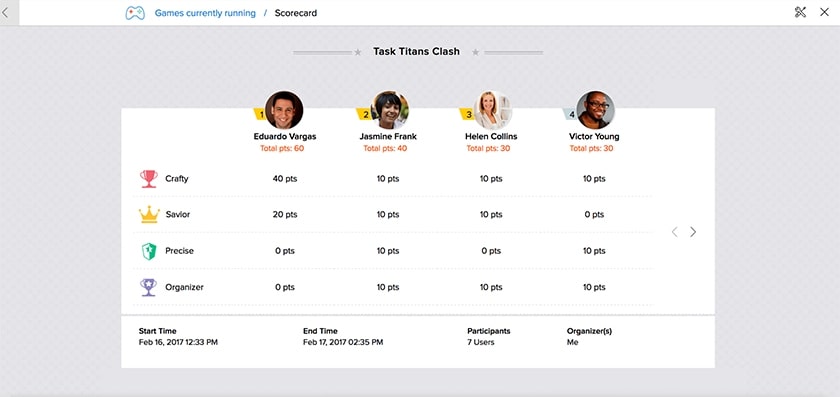
Zoho Gamescope leaderboard (Source: Zoho)
6. Monitoring Performance
To manage your sales operation, it’s essential to monitor the performance of individual reps as well as sales teams to ensure activities are being completed and goals are being met. If you find a team member is falling short, plan to provide coaching or allocate additional resources (such as sales training) to facilitate sales performance improvements.
Performance can be tracked using sales reporting tools commonly found within customer relationship management (CRM) systems like Pipedrive. In terms of what to look for, you want to see that sales activity aligns with what’s required in their sales activity quotas and that each rep is producing enough deals or revenue to hit company goals.
Thank you for downloading!
💡 Quick Tip:
Use customer relationship management (CRM) software like HubSpot CRM to generate reports of individual and team sales activity, then use that data in your sales performance reviews to evaluate performance.
If a sales rep is behind on their numbers or performing at a relatively lower level compared to their peers, you need to find the root cause of poor performance. This could be a specific part of the sales process they struggle with or simply not having enough qualified leads to hit their goals.
Pipedrive performance and goal tracking (Source: Pipedrive)
Bottom Line
Managing sales requires you to take on a broad range of responsibilities at once. You’re not only a sales leader, but also a team motivator, recruiter, strategist, and operations manager. You are responsible for providing your sales team with resources to succeed and become high performers. Use the appropriate sales software and follow these practices to ensure your team is well-equipped to meet your business goals for revenue and successful sales growth.
